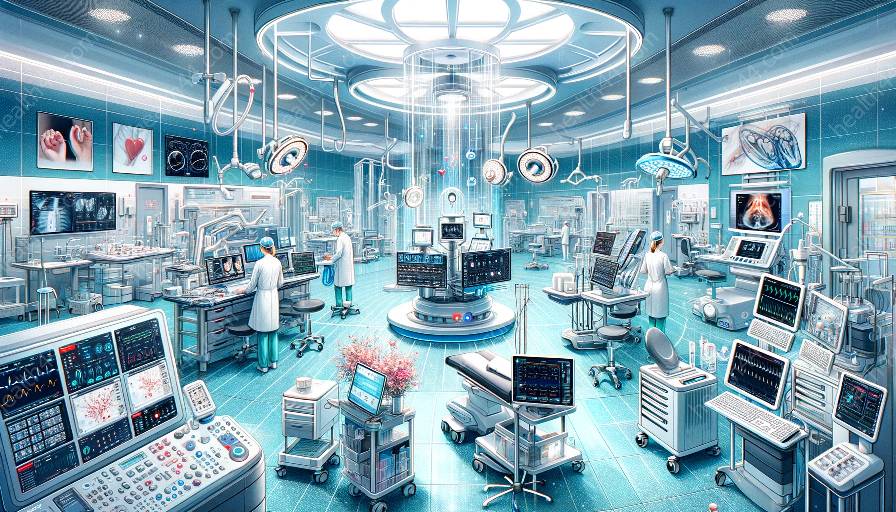Advancements in technology and biology have significantly impacted the field of bioengineering, particularly in the development of medical devices. Bioinformatics is at the forefront of this transformation, playing a crucial role in enhancing research, development, and innovation for medical devices.
The Intersection of Bioengineering and Medical Devices
Bioengineering, also known as biomedical engineering, integrates principles and methods from engineering, biology, and medicine to create innovative solutions for healthcare. Within this multidisciplinary field, medical devices play a pivotal role, encompassing a wide range of tools, equipment, and technologies designed to diagnose, monitor, and treat medical conditions.
From diagnostic imaging systems to prosthetic limbs, bioengineered medical devices have revolutionized the way healthcare is delivered, improving patient outcomes and quality of life.
Understanding Bioinformatics
Bioinformatics is a field that combines biology, computer science, and information technology to analyze and interpret biological data. It involves the use of computational tools and techniques to decipher complex biological processes, genetic sequences, and molecular structures.
By leveraging bioinformatics, researchers can gain valuable insights into the underlying mechanisms of diseases, identify potential therapeutic targets, and optimize the design and functionality of medical devices.
Role of Bioinformatics in Bioengineering Research
When it comes to bioengineering research for medical devices, bioinformatics plays a multifaceted role, influencing various stages of development and implementation:
- Data Analysis and Interpretation: Bioinformatics tools enable researchers to analyze large datasets generated from genomic studies, clinical trials, and experimental models. By uncovering patterns and correlations within the data, bioinformatics facilitates the identification of biomarkers, disease pathways, and genetic variations relevant to medical device development.
- Genomic and Proteomic Profiling: Bioinformatics methodologies contribute to the comprehensive profiling of genomic and proteomic information, allowing for the characterization of cellular functions, disease mechanisms, and biomolecular interactions. This knowledge is instrumental in the design and customization of medical devices tailored to specific biological signatures and patient needs.
- Simulation and Modeling: Through computational modeling and simulations, bioinformatics aids in the virtual testing and optimization of medical device prototypes. This approach accelerates the design process, evaluates performance under varying conditions, and predicts potential outcomes, ultimately leading to more robust and efficient devices.
- Integration of Big Data: The integration of diverse biological and clinical data sets, facilitated by bioinformatics platforms, empowers bioengineers to incorporate real-world evidence into the development of medical devices. This multidimensional approach enhances the safety, efficacy, and usability of the devices, aligning them with the specific requirements of healthcare settings and patient populations.
Innovative Applications and Impact
The synergy between bioinformatics and bioengineering has led to remarkable advancements in medical device technologies, driving novel applications and transformative impact:
- Personalized Medicine: Bioinformatics enables the realization of personalized medical devices tailored to an individual's genetic makeup, disease profile, and physiological characteristics. From personalized prosthetics to implantable devices, this approach enhances treatment precision and patient outcomes, marking a paradigm shift in healthcare delivery.
- Biocompatibility and Safety: Bioinformatics aids in assessing the biocompatibility and safety of medical devices by analyzing biological responses and interactions at the molecular level. This ensures the development of devices that are compatible with the human body, minimizing adverse reactions and enhancing overall biocompatibility.
- Remote Monitoring and Healthcare Connectivity: Bioinformatics-driven medical devices are integrated with remote monitoring and connectivity features, allowing for real-time data collection, analysis, and transmission. This connectivity fosters seamless communication between healthcare providers and patients, enabling proactive care management and early intervention, particularly for chronic conditions.
- Interdisciplinary Research Alliances: Collaborative efforts between bioinformaticians, bioengineers, medical practitioners, and industry stakeholders will foster the development of innovative medical devices, harmonizing expertise from diverse domains to address complex healthcare challenges.
- AI and Machine Learning Integration: The convergence of bioinformatics with artificial intelligence (AI) and machine learning will drive predictive analytics and decision support systems for medical device design, ushering in a new era of intelligent, data-driven healthcare solutions.
- Regulatory Compliance and Ethical Considerations: Bioengineering research involving medical devices will increasingly emphasize regulatory compliance and ethical considerations, informed by data-driven insights and bioinformatic analyses to ensure the safety, efficacy, and ethical use of advanced technologies.
Future Perspectives and Collaborative Initiatives
Looking ahead, the integration of bioinformatics and bioengineering in medical device research is poised to witness continued growth and collaboration:
Conclusion
Bioinformatics serves as a linchpin in bioengineering research for medical devices, harmonizing the power of computational analysis with biological knowledge to drive innovation and address unmet medical needs. As bioinformatic technologies continue to evolve, their integration with bioengineering holds immense promise for reshaping the landscape of medical device development, ultimately translating into enhanced healthcare outcomes for individuals and populations worldwide.


